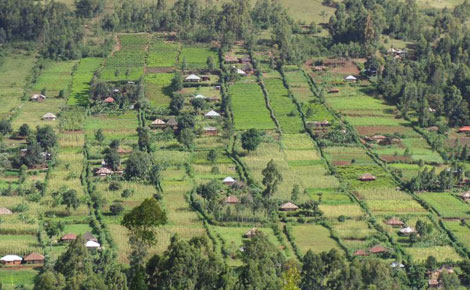
When Deputy President William Ruto last week urged farmers in Nakuru to stop fragmenting their parcels of land, he was unwittingly preparing landowners in the country for the inevitable.
Ruto’s concern was that sub-dividing land into small sizes would increase poverty as they are economically non-viable. But soon, no one may need Ruto or any other government official to dissuade them from fragmenting their parcels of land.
Article 68(i) of the Constitution empowers Parliament to prescribe the minimum and maximum land sizes an individual can hold.
Study
The idea of capping land sizes has also been provided for in the Land Act 2012, which stipulates that a scientific study to determine the economic viability of minimum and maximum land sizes be conducted. The study was to be commissioned by May 1 last year but has been delayed.
The public will be allowed to give comments on the findings of the study before being debated and adopted by Parliament.
Rules prescribing the acreages – based on the scientific study report – will then be published by Lands Cabinet Secretary. According to the Land Act, the scientific study is mainly to determine the economic viability of private land acreages in various zones countrywide.
Lands Cabinet Secretary is required to table the final report to Parliament for debate and adoption within three months after its publication.
The law bars the registrar from registering property that breaches the prescribed guidelines on minimum and maximum acreages of private land.
The provision of the Land Act may take effect as the country struggles to implement the elusive land reforms. Since independence, the emotive land question manifested itself in many ways such as fragmentation, breakdown in land administration, disparities in ownership and poverty.
Consequently, other complications came to the fore including environmental, social, economic and political problems.
Complications
Others are deterioration in land quality, squatting and landlessness, disinheritance, urban squalor, under-utilisation and abandonment of agricultural land, tenure insecurity and conflicts. Some land owners in counties like Kisumu are even jittery following a recently passed Motion by the county assembly to repossess undeveloped private land.
The move by the Kisumu County Assembly is not new as former Lands Permanent Secretary Dorothy Angote once warned that idle land would be taxed unless leased or made productive. Currently, freehold land makes up slightly over 20 per cent of land held countrywide either individually or collectively. Majority of the high value agricultural land that has been adjudicated is registered as freehold after colonial settlers demanded land individualisation before investment.
Stay informed. Subscribe to our newsletter
Even as the minimum and maximum ownership acreage waits to be set, the land question remain culturally, ethnically and economically charged as pressure on land increases with growing population.
Kenya is not alone in setting land sizes an individual can own. The Land Reform Review Group in Scotland, for instance, has also made proposals that there should be an upper limit on the total amount of land that can be held by a private landowner or single beneficial interest.
According to the group, ministers should be urged to develop proposals to establish the legal limit, and councils given the right to force the sale of vacant or abandoned plots. The review group, which was set up by Scottish ministers in 2012, urged the government to be “radical in its thinking and bold in its action”.
The report makes a total of 62 recommendations, which it says are reforms in the public interest, which promote the common good.
— The writer is an advocate of the High Court
 The Standard Group Plc is a
multi-media organization with investments in media platforms spanning newspaper
print operations, television, radio broadcasting, digital and online services. The
Standard Group is recognized as a leading multi-media house in Kenya with a key
influence in matters of national and international interest.
The Standard Group Plc is a
multi-media organization with investments in media platforms spanning newspaper
print operations, television, radio broadcasting, digital and online services. The
Standard Group is recognized as a leading multi-media house in Kenya with a key
influence in matters of national and international interest.
 The Standard Group Plc is a
multi-media organization with investments in media platforms spanning newspaper
print operations, television, radio broadcasting, digital and online services. The
Standard Group is recognized as a leading multi-media house in Kenya with a key
influence in matters of national and international interest.
The Standard Group Plc is a
multi-media organization with investments in media platforms spanning newspaper
print operations, television, radio broadcasting, digital and online services. The
Standard Group is recognized as a leading multi-media house in Kenya with a key
influence in matters of national and international interest.








